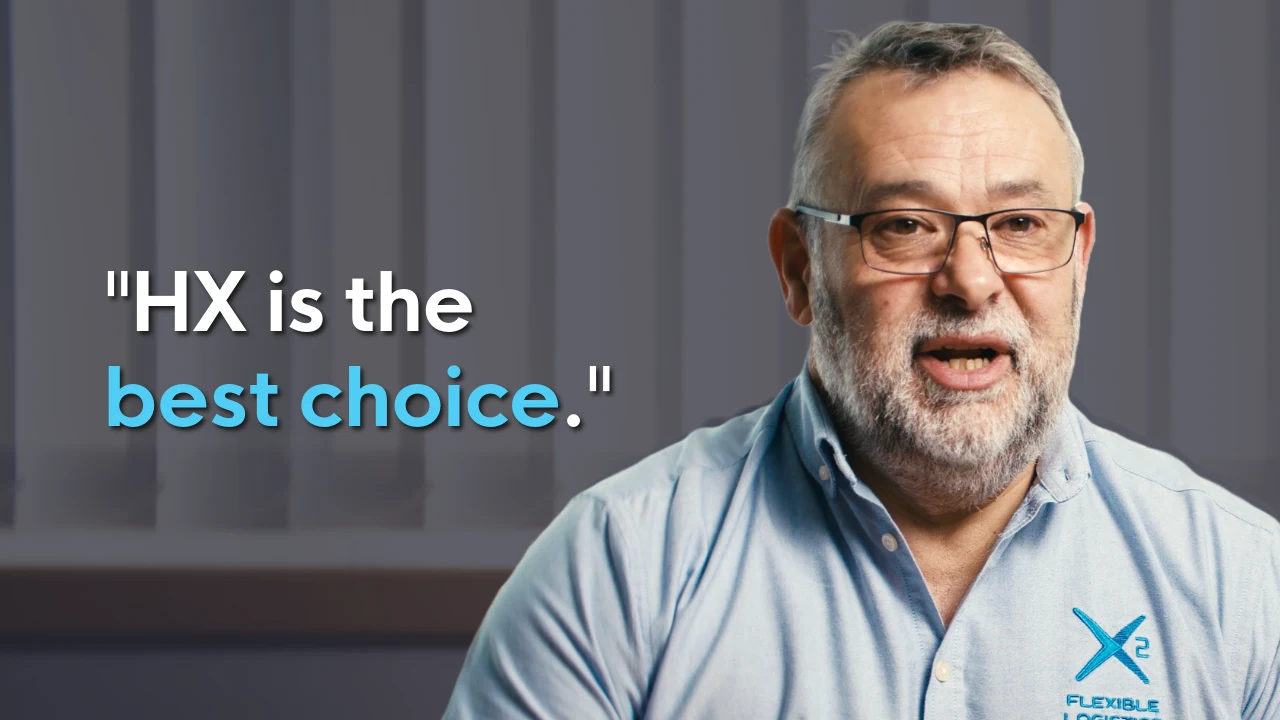Getting an operator licence is the first step for anyone wanting to become a HGV owner-driver in the UK, as it lets you legally run a haulage business using large vehicles.
In this guide, we’ll take you through each of the steps for getting your operator licence, including the different types of licences, the required paperwork, where to submit your application, and how to maintain it once you’re up and running.
What we’ll cover
What is an operator licence?
A ‘goods vehicle operator’s licence’, also known as an ‘O licence’, is a legal requirement for anyone who wants to start a haulage company using Heavy Goods Vehicles (HGVs), and shows that you meet specific standards and can run your business safely.
The operator licence depends on your truck size, and applies to vehicles over 3.5 tonnes as the gross vehicle weight (GVW), which includes all HGVs, articulated lorries, and larger rigid lorries.
When applying for an O licence, there are a few fees involved:
- Application for a licence – £257 fee
- Issue of a licence – £401 fee
- Licence renewal (every 5 years) – £401 fee
If you need to make changes to your licence in the future (e.g. you need to add more vehicles), there’s a £257 fee.
How to get your operator licence
1. Determine the type of licence you need
Before applying, decide which type of licence suits your business.
- If you plan to carry goods for others within the UK, go for the Standard National licence.
- If you intend to take loads abroad, choose the Standard International licence.
- If you’re only moving your own goods, the Restricted licence is the one for you.
2. Meet the operator licence requirements
To get an operator’s licence, you need to meet several conditions. You need to show that you are of good repute, have sufficient financial standing, possess professional competence, and have access to a haulage yard.
This means you need to be trustworthy, have enough money to run your business, and know how to operate an HGV business safely.
You’ll need a few documents to prove you meet these O licence requirements.
For financial standing, you might need:
- Bank statements: Showing you have the necessary funds to maintain your vehicles (usually £8,000 for the first vehicle, and £4,450 for each additional vehicle).
- Financial guarantees: From a third party if you don’t have the money yourself.
- Credit facilities: Like a letter from your bank.
For good repute, you must provide:
- Criminal record checks: Showing you have no serious convictions.
- References: From reputable individuals in the transport and logistics industry.
To prove professional competence, you’ll need:
- Certificate of Professional Competence (CPC): This can be obtained by passing the required exams as part of your HGV driver training.
- Proof of qualifications: If you have equivalent qualifications from other EU countries, they may also be accepted.
As part of your application, you must have access to a suitable haulage yard. This yard is where your vehicles will be parked, maintained, and inspected. You need to provide evidence of your yard’s location and its adequacy for your operations, including:
- A lease agreement or proof of ownership: Showing you have rights to use the yard.
- A site plan: Detailing the layout and facilities of the yard.
- Maintenance arrangements: Proving that your vehicles will be kept in good condition at this location.
You’ll need an operator’s licence for each traffic area where you have a haulage yard, or ‘operating centre’. The full list of traffic areas is available on the GOV.UK application page.
Make sure you select the correct one based on your yard’s location, as this ensures you comply with regional regulations and operate within the legal boundaries of your traffic area.
3. Completing the application
You’ll need to apply for your HGV operator’s licence through the GOV.UK website.
Fill out the application form carefully, and include all the required documents like your proof of financial standing and maintenance arrangements.
Double-check everything before you submit to avoid delays.
4. Advertising your application
Believe it or not, you’ll need to advertise your application in a local newspaper. This is a public notice letting people know about your plans to operate an HGV business.
Include details of where and when you plan to run your business. After the ad runs, submit proof of advertisement with your application. This step helps keep the process transparent.
Think of this as a charming nod to the olden days. Even in the age of the internet, the law insists you advertise in the local paper. It might seem outdated, but it’s still a requirement.
So, grab your copy of the local paper and let the community know about your new venture!
5. Awaiting the decision
Once you’ve submitted your haulage licence application, you’ll have to wait for a decision from the Traffic Commissioner.
They may request more information or call you for a public inquiry. Be prepared to answer questions and provide additional documents if needed.
If your application is refused, you can appeal the decision.

Maintaining your operator licence
Compliance with ongoing requirements
After you get your owner operator licence, you or your company’s transport manager will need stick to certain rules and regular checks, including:
- Conduct regular vehicle inspections: Ensure your vehicles are roadworthy.
- Maintain a written maintenance plan: Schedule regular checks and repairs.
- Keep detailed records: Log all inspections, repairs, and maintenance activities.
- Ensure drivers are qualified: Verify that all drivers have the necessary qualifications and training.
- Follow safety regulations: Make sure your operations comply with health and safety standards, including tachograph rules and cabotage regulations.
These steps keep your licence in good standing, and ensure you pass DVSA roadside inspections if they happen.
Renewing your haulage licence
Operator licences aren’t forever. You’ll need to renew yours every 5 years.
Keep track of the renewal dates and prepare the necessary documents in advance. This includes updated financial statements and proof of ongoing compliance with safety standards. Missing the renewal deadline can disrupt your business operations.
Prepare the following for renewal:
- Updated financial documents: Bank statements, financial guarantees, and credit facilities.
- Maintenance records: Proof that you’ve been maintaining your vehicles as required.
- Compliance reports: Documentation showing adherence to safety and operational standards.
Updating your O licence
If you need to make changes to your licence, like updating addresses, changing named drivers or even adding new vehicles, you’ll need to pay a £257 fee.
Tips for getting your operator’s licence quickly
To speed up the process, avoid common mistakes. Make sure your application is complete and accurate, because missing information can delay approval.
Consider seeking professional help if you’re unsure about any part of the application. Specialists can guide you through the process and help you meet all requirements.
Join HX to get haulage jobs
Once you have your haulage licence, joining the Haulage Exchange (HX) can help you find reliable haulage contracts quickly.
HX connects you with thousands of transport companies across the UK and Europe, and by using our real-time freight exchange, you can see live loads, bid on them, and secure jobs fast. We also integrate leading tools for managing your fleet, tracking vehicles, and handling invoicing, saving you time and reducing admin tasks.
Joining HX gives you a competitive edge in the haulage industry. You can always find work, build lasting relationships with shippers, and grow your business sustainably. Start using HX today to take your haulage business to the next level.
Conclusion
Getting an operator licence is your first step towards a successful haulage business. Start by understanding what type of haulage licence you need. Meet the necessary requirements and complete the application process carefully. Advertise your application, wait for the decision, and maintain your licence by following ongoing requirements.
By following these steps, you’ll be well on your way to building a thriving HGV business.
Remember, the O licence is your ticket to legally run and grow your business. Good luck on your journey to becoming a licensed HGV owner-driver!
Frequently Asked Questions
What is the difference between a Standard National and a Standard International O licence?
A Standard National licence allows you to carry goods for hire and reward within the UK, while a Standard International licence lets you transport goods across borders within the EU and beyond.
Do I need an operator licence for vans under 3.5 tonnes?
No, an O licence is only required for vehicles over 3.5 tonnes GVW. However, vans used for hire and reward internationally may need a Van Operator Licence under new EU rules.
How much money do I need to show for financial standing?
You must prove you have at least £8,000 for your first vehicle and £4,450 for each additional vehicle. This can be in bank statements, credit facilities, or financial guarantees.
What are the rules for maintaining an O licence?
You must conduct regular vehicle checks, keep detailed maintenance records, ensure driver compliance, and follow health and safety regulations to keep your licence in good standing.
How long does it take to get an O licence?
The process usually takes 7 to 9 weeks, but this depends on whether your application is complete, if there are objections, and if a public inquiry is required.
Can I change my O licence after approval?
Yes, you can update your licence to add or remove vehicles, change operating centres, or amend transport managers. Each change usually incurs a £257 fee.
Do I need a transport manager for my operator licence?
A Standard National or International licence requires a qualified Transport Manager with a Certificate of Professional Competence (CPC). A Restricted licence does not.




